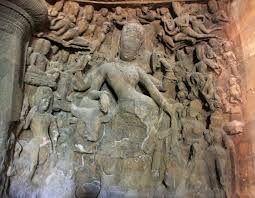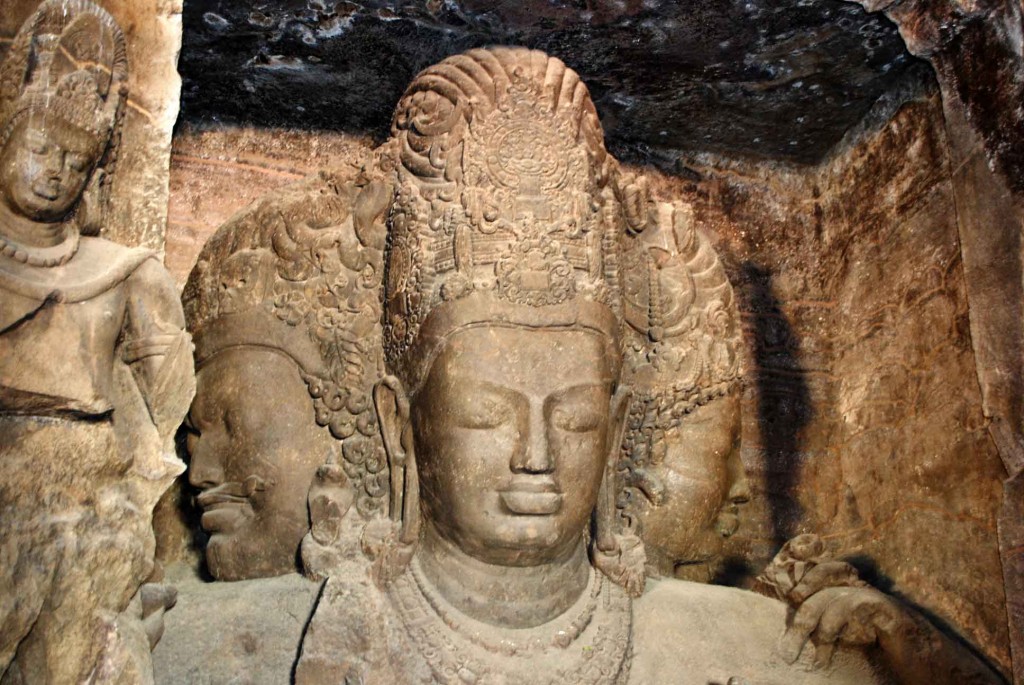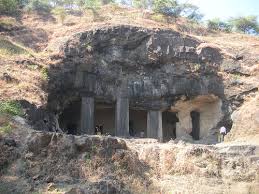Elephanta Caves
The Elephanta Caves (180 56’ 20” N; 720 55’ 50” E), taluka Uran, district Raigad is located on island hills about 11 km north-east of the Apollo Bandar, Mumbai and 7 km from the shore of the mainland, approximately covering an area of 7 km in circumference. The island is named after a colossal elephant found in the island, which is popularly known as ‘Gharapuri’. At present, the statue of elephant is housed at Jijamata Garden in Mumbai. In ancient period, the place is variously identified as Puri which is mentioned in the Aihole inscription of Pulakesin II. It seems, different dynasties held their sway over this island, namely, the Konkan-Mauryas, Trikutakas, Chalukyas of Badami, Silaharas, Rashtrakutas, Kalyani Chalukyas, Yadavas of Deogiri, Muslim rulers of Ahmedabad and then by the Portuguese. The Marathas also had this island under their control and from them it passed into the control of the British.
There are seven cave excavations in the Elephanta group and these are datable from circa 6th – 7th centuries A.D. Among the cave excavations, the Cave 1 is the most impressive which represents the evolved Brahmanical rock-cut architecture. The cave is also famous for the exquisite and vibrant sculptures. On plan it almost resembles the Dumar Lena (Cave 29) of Ellora. The cave has a main entrance on the north with two other openings on the east and west respectively and a central hall with six rows of pillared columns, six in each row except on the western corner, where a shrine of lingam is provided.
On plan, there are three large square recesses divided off by pilasters each of them bearing a gigantic image of a dvarapala. The panel on the east has a figure of ardhanarisvara, a form of Siva with the combined energies of male and female; and on the west figures of Siva and Parvati playing chausar is carved. The central recess holds the most famous and remarkable sculpture of this period known as the Mahesa-murti. It is a colossal bust of the three forms of Siva, the aghora, turbulent and fearsome; tatpurusha, benign and meditative and vamadeva, mild pleasing and lovable. The other notable panels in the main cave are Andhakasuravada murti; cosmic dance of Nataraja; Kalyanasundara murti; Gangadhara murti; Ravana shaking Kailasa and Siva as Lakulisa. A panel depicting Saptamatrikas near the eastern opening is also remarkable.
Time to Visit:
Open from 9 A.M. to 5 P.M. and Closed on Monday
Entrance Fee:
Citizens of India and visitors of SAARC (Bangladesh, Nepal, Bhutan, Sri Lanka, Pakistan, Maldives and Afghanistan) and BIMSTEC Countries (Bangladesh, Nepal, Bhutan, Sri Lanka, Thailand and Myanmar) – Rs. 10 per head.
Others: US $ 5 or Indian Rs. 250/- per head
| Location: | 10 km from Mumbai, on Elephanta Island |
| Attractions: | Rock cut temples, elephant statue, ‘Shivalingam’, the image of ‘Trimurti Sadashiva’. |
| Best Time to Visit: | October to March |



